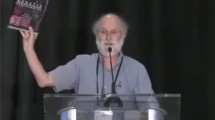Abstract
We introduce Genetic Systems, a formalism inspired by genetic regulatory networks and suitable for modeling the interactions between the genes and the proteins, acting as regulatory products.
The generation of new objects, representing proteins, is driven by genetic gates: a new object is produced when all the activator objects are available in the system, and no inhibitor object is available. Activators are not consumed by the application of such an evolution rule. Objects disappear because of degradation: each object is equipped with a lifetime, and the object decays when such a lifetime expires.
We investigate the computational expressiveness of Genetic Systems: we show that they are Turing equivalent by providing an encoding of Random Access Machines in Genetic Systems.
Preview
Unable to display preview. Download preview PDF.
Similar content being viewed by others
References
Blossey, R., Cardelli, L., Phillips, A.: A Compositional Approach to the Stochastic Dynamics of Gene Networks. In: Priami, C., Cardelli, L., Emmott, S. (eds.) Transactions on Computational Systems Biology IV. LNCS (LNBI), vol. 3939, Springer, Heidelberg (2006)
Busi, N., Zandron, C.: Computing with Genetic Gates, Proteins and Membranes. In: Hoogeboom, H.J., Păun, G., Rozenberg, G., Salomaa, A. (eds.) WMC 2006. LNCS, vol. 4361, Springer, Heidelberg (2006)
De Jong, H.: Modeling and Simulation of Genetic Regulatory Systems: A Literature Review. Journal of Computatonal Biology 9, 67–103 (2002)
Finkel, A., Schnoebelen, Ph.: Well-Structured Transition Systems Everywhere! In: Theoretical Computer Science, vol. 256, pp. 63–92. Elsevier, North-Holland, Amsterdam (2001)
Minsky, M.L.: Computation: finite and infinite machines. Prentice-Hall, Englewood Cliffs (1967)
Păun, G.: Membrane Computing. An Introduction. Springer, Heidelberg (2002)
Păun, G., Rozenberg, G., Salomaa, A.: DNA Computing. New computing paradigm. Springer, Heidelberg (1998)
Reisig, W.: Petri nets: An Introduction. In: EATCS Monographs in Computer Science. Springer, Heidelberg (1985)
Shepherdson, J.C., Sturgis, J.E.: Computability of recursive functions. Journal of the ACM 10, 217–255 (1963)
Author information
Authors and Affiliations
Editor information
Editors and Affiliations
Rights and permissions
Copyright information
© 2007 Springer-Verlag Berlin Heidelberg
About this paper
Cite this paper
Busi, N., Zandron, C. (2007). Computing with Genetic Gates. In: Cooper, S.B., Löwe, B., Sorbi, A. (eds) Computation and Logic in the Real World. CiE 2007. Lecture Notes in Computer Science, vol 4497. Springer, Berlin, Heidelberg. https://doi.org/10.1007/978-3-540-73001-9_11
Download citation
DOI: https://doi.org/10.1007/978-3-540-73001-9_11
Publisher Name: Springer, Berlin, Heidelberg
Print ISBN: 978-3-540-73000-2
Online ISBN: 978-3-540-73001-9
eBook Packages: Computer ScienceComputer Science (R0)




